
Coin Value Contents Table
- 1942 Wheat Penny Value Chart
- History of the 1942 Wheat Penny
- Features of the 1942 Wheat Penny
- 1942 Wheat Penny Grading
- 1942 Wheat Penny Value Guides
- 1942 No Mint Mark Wheat Penny Value
- 1942-D Wheat Penny Value
- 1942-S Wheat Penny Value
- 1942 (P) Proof Wheat Penny Value
- Rare 1942 Wheat Penny Error List
- Where to Sell Your 1942 Wheat Penny ?
- 1942 Wheat Penny FAQ
1942 was an interesting year. Pearl Harbour had just brought the US into the Second World War. And that had a significant effect on everything including American money. The various forms of 1942 Pennies were a direct result of this. Let’s explore the 1942 Wheat Penny Value.
1942 Wheat Penny Value Chart |
||||||
| Coin | MS 65 | MS 66 | MS 67 | MS 67+ | MS 68 | PR 67 CAM |
| 1942-S Wheat Penny | $30 | $40 | $185 | $575 | $9,500 | – |
| 1942-D Wheat Penny | $22 | $28 | $165 | $525 | $8,000 | – |
| 1942 (P) No mint Mark Wheat Penny | $22 | $36 | $200 | $1,000 | $3,960 | – |
| 1942 (P) Proof Wheat Penny | – | – | – | – | – | $17,500 |
History of the 1942 Wheat Penny
In 1942, the Second World War was in full swing so nickel and copper were largely diverted for military use. This meant the US Mint was actively seeking alternative materials for coins. Dimes, Quarters, Half Dollars, and Dollars were 90% Silver and 10% copper until 1965 so the War didn’t affect their metal composition. They only changed during the 1960s silver spike.
But Nickels were previously 75% copper and 25% nickel while Pennies were 95% Copper and 5% Tin and/or Zinc. So Wartime Nickels (1942 to 1945) were switched to 35% silver that was hardened with 9% manganese. Their copper content was reduced to 56%. And Steel Pennies aka Wartime Cents or Steelies were coated with zinc to prevent corrosion. But it didn’t work.
While these experiments were going on, the mint continued to make normal bronze pennies for circulation. They also made a few thousand collectibles. But since 1942 was the last year before Steelies, people speculated on the coins, giving them a high resale value. After all, no one knew if the Wartime Cents would be minted for 5 months or 5 years on the battlefield.
The Legacy of Steel War Pennies
Since they weren’t successful, Steel Pennies were only minted in 1943 with a few stray pieces in 1944. But experimental striking began in 1942. That year, several pattern coins were made in glass, plastic, aluminum, white metal, and the zinc-coated steel that was eventually mass-produced. The mint also tried samples using the heads side of the Colombian Two Centavo.
At least two of these samples were made of glass and had a Two Centavo Obverse (that’s the heads side) with an olive wreath reverse (tails side). One of them is split in half, and another sold for $70,500 on 4th January 2017. It was graded SP 64. Other Colombian samples were made of Bakelite, lead, hard rubber, manganese, red fiber, amber, zinc, bronze, and brass.
Also read: 12 Most Valuable Lincoln Penny Worth Money
Features of the 1942 Wheat Penny
First, let’s get the jargon out of the way. A typical coin has images called devices, words called legends or mottos, and various numbers e.g. the mint date. The front or heads side is called its obverse while the tails side is the reverse. The thinnest sides are the edges and might have ridges called reeds. The backdrop of a coin is the field and its raised border is a collar or rim.
The Obverse of the 1942 Wheat Penny
The device is a portrait of Abraham Lincoln, the 16th US President. He’s facing right, with the mint mark and date in front of his chest and the legend Liberty behind him. The US motto In God We Trust is over his head. His shoulder cut-off has VDB, designer Victor David Brenner.
The Reverse of the 1942 Wheat Penny
The top of the coin has the motto E Pluribus Unum with a stalk of wheat on either side. It’s why they’re called Wheat Cents. The motto is in a small font, followed by the denomination, One Cent, in a much larger font. Next comes United States of America in a mid-sized font.
Other Features of the 1942 Wheat Penny
In 1942, the Wheat Cent was made of 95% Copper and 5% Zinc. Some experimental pieces were made using other materials, but only one is known to have survived – the glass coin we mentioned earlier. The 1942 Penny was 19.05mm in diameter (0.75”) and weighed 3.11g.
Also read: 13 Most Valuable Wheat Penny Worth Money
1942 Wheat Penny Grading
Apart from their condition and their clarity of detail, 1942 Wheat Pennies are graded by color to classify the brightness of their tone. The best condition is RD for Red, followed by RB for Reddish-Brown, and finally BN or BRN for Brown. However, if someone cleans a coin or uses chemicals to heighten its color, this lowers the value of your 1942 Penny.
| # | Grade |
|---|---|
| 1 | Basal State-1 |
| 2 | Fair |
| 3 | Very Fair |
| 4, 5, 6 | Good |
| 7, 8, 10 | Very Good |
| 12, 15 | Fine |
| 20, 30 | Very Fine |
| 40 | Extremely Fine |
| 50 | About Uncirculated |
| 60 | Mint State |
| 65 | Mint State |
| 70 | Mint State |
Please check our grading guides to know your coin scale, It’s the necessary step to know the exact value of your coin.
Check out now: How to Grade Lincoln Wheat Penny?
1942 Wheat Penny Value Guides
The experimental coins we mentioned were all pattern coins. And apart from the 1942 US Mint J-2069 Glass Colombian coin, they were allegedly destroyed. But 1942 Wheat Pennies still exist in Proof Strikes (for collectors) and Business Strikes for circulation. These bronze coins were made in Philadelphia, Denver, and San Francisco, including Philadelphia proofs.
1942 No Mint Mark Wheat Penny Value
A Philadelphia Wheat Cent may be described as a 1942 (P) or a 1942 ‘P’. You may even see it listed as a 1942 No-Mint-Mark. Either way, it’s a fairly valuable coin. The Philadelphia Mint produced 657,796,000 that year, so they’re easy to find, and that affects their price. An AU 58 BN was $2,990 in January 2010 while an MS 69 RD sold for $3,960 on 19th December 2021.
1942-D Wheat Penny Value
In 1942, the Denver Mint coined 206,698,000 Pennies with the D Mint Mark. That’s almost a third of Philadelphia’s volumes, and their values seem proportional. On 4th December 2008, an MS 68 RD sold for $12,650, up from $11,500 in January 2006. Fifteen years later, PCGS has received 8 coins in this grade, so they’ve revised their 2023 evaluation down to $8,000.
1942-S Wheat Penny Value
The San Francisco Mint made 85,590,000 in 1942, all with the S Mint mark. Interestingly, the price record for an MS 68 RD matches its Denver counterpart, selling for $12,650 on 1st January 2006. Submitted volumes are similar as well since PCGS has received 7 coins for grading. That’s why the estimate for July 2023 is $9,500, though a 2021 sale earned $7,800.
1942 (P) Proof Wheat Penny Value
Proof coins serve two main purposes. They provide a vetted record for the archives, showing the ideal form of any coin. They also offer added revenue to the mint because collectors and investors love to buy them. Proof coins can be matte, mirror-like (reflective field, frosted device), or reversed (reflective device, frosted field). The frosting in 1942 was acid pickling.
To get that mirror-like finish, both the die and the planchet are polished before striking. The first 50 to 100 coins or so have an extreme contrast between the field and the device, so they get the Deep Cameo grade. As the finish fades, subsequent coins are Cameos, then eventually Red proofs. 1942 Wheat Penny Proofs were made in Philadelphia so they had no mint marks.
The mint made 32,600 coins that year, so let’s talk about their highest prices. On 7th July 2003, a PR 66 BN sold for $1,265. And on 16th February 2017, a PR 67 RB did a little better, selling for $1,528. Half a step up, a PR 67+ RD went for $4,080 on 20th September 2020. And a PR 67 CAM quadrupled to $17,625 on 3rd February 2014. Its 2023 estimate is $17,500.
Also read: 17 Most Valuable Indian Head Penny Worth Money
Rare 1942 Wheat Penny Error List
The 1942 Wheat Penny has tons of errors that raise the coin’s value. These include doubled die errors (DDOs) and re-punched mint marks (RPMs) as well as mechanical mint mistakes like cud breaks, die clashes, and misalignment. You’ll also find double denominations and wrong planchet errors, which are the most common mint errors for pennies at the US Mint.
1942 (P) Wheat Penny DDO Errors FS-101 to FS-104
DDO means doubled die error. It’s sometimes called hub doubling because it happens as the hub hits the die. The second strike lands on a slightly different spot, resulting in doubled bits that get transferred to any coin the die makes. 1942 (P) had four DDO varieties from FS-101 to FS-104. An MS 65 RD was $475 in 2023, but eBay sold an MS 65 RB for $1,200 in 2022.
1942-D/D Wheat Penny RPM Errors FS-502 to FS-504
Modern coins are designed and minted digitally so they’re only struck once. But in the past, every Wheat Cent needed two or three strikes, so you’d get errors like DDRs and QDOs. The mint mark was added last by hand, so you might see an earlier one below it if the puncheon slipped. It’s called an RPM or re-punched mint mark. An MS 67 RD sold for $1,130 in 2022.
1942-S/S Wheat Penny RPM Error FS-512
The 1942 San Francisco Cent had a few mint mark errors. This was before that branch of the mint switched exclusively to collectibles. So this first mint mistake popped up on circulating coins aka regular strikes or business strikes. In MS 67 RD, a 1942 S/S sold for $1,763 on 30th January 2020. Another coin in the same grade went for $1,350 during a 2018 sale on eBay.
1942-S/S/S Wheat Penny RPM Plus DDO Errors FS 101/301
When a coin has multiple mint mistakes, its total value shoots higher. In this case, the Wheat Penny has hub doubling plus a triple-punched mint mark. Authoritative appraisers may not rank it very high, but coin sales are all about supply and demand, meaning the coin did fairly well on eBay. Graded MS 67 RD, this 1942-S Wheat Cent sold for $2,350 on 17th July 2019.
1942-S Wheat Penny DDO Error
Unlike its Denver sibling, the hub doubling error on the 1942-S Wheat Penny isn’t expensive. An MS 64 RD only sold for $440 in 2012. That’s still a lot for a 1-cent coin, but DDOs from Philadelphia can sometimes sell for $1,000 or more. It’s still worth getting a 1942-S DDO to complete your collection though. You can later position it as part of a comprehensive set.
1942 (P) Wheat Penny Thick Planchet Error
Usually, the blanks that are used to make coins have a specific weight and thickness based on their intended denomination. So if your coin is struck on the wrong planchet e.g. a dime on a nickel blank, it may be heavier. In this case, a 1942 Philadelphia Penny was struck on 4.11g blank instead of 3.11g. Due to that, the MS 62 BN sold for $1,645. Always weigh your coins!
1942 (P) Wheat Penny Struck on a Dime Planchet
The previous error features an inexplicably thick blank. But this one was struck on the wrong denomination. It’s a penny design that was imprinted on a silver 10c blank, meaning its color, weight, and size are wrong. Some of the writing is sliced off since pennies are 19mm across while dimes are 17.9mm. In AU 58, this mint mistake raised its value above $14,000!
1942 (P) Wheat Penny Mirror Brockage Struck 40% Off-Centre
A brockage error happens when the previous planchet gets stuck on the die (aka a die cap). The die cap blocks the coin below, damaging its design. This mirror brockage is also 40% misaligned because the planchet was already on its way out of the press. That left part of the coin blank on both sides. These dual errors gave the MS 62 BN a premium value of $2,500.
1942 (P) Wheat Penny Struck Thru a Fragment
Minor errors like fragments can be worth money. One AU 55 BN sample sold for $485, but you’re unlikely to find any in your change since they’re quickly picked out. If you’re new to the coin space and looking for valuable Wheat Penny errors, your best bet is to buy coin rolls, grab a coin microscope, and focus on the 1942-D RPMs or 1942 (P) FS-101 to FS-104 DDOs.
Also read: 11 Most Valuable Wheat Penny Errors
Where to Sell Your 1942 Wheat Penny ?
Now that you know the value of your coins, do you know where to sell those coins online easily? Don’t worry, I’ve compiled a list of these sites, including their introduction, pros, and cons.
Check out now: Best Places To Sell Coins Online (Pros & Cons)
1942 Wheat Penny FAQ
How Much is the 1942 Wheat Penny Worth?
The 1942 Wheat Penny without a mint mark (i.e. that’s the one minted in Philadelphia) is estimated at $1,000 for an MS 67+ RD. But an NGC-graded MS 68 RD sold for $3,960 on 19th December 2021. So far, it’s the only coin in that grade that’s been submitted anywhere.
How Do I Know if My 1942 Penny is Valuable?
Sending coins to PCGS, ANACS, NGC, and other grading companies costs money. It may even cost more than the value of the coin itself – plus shipping! So first, check online for pages that have high-resolution photos of coin grades. That way, you can do a quick visual comparison to estimate its condition. Next, check your penny for errors and look them up.

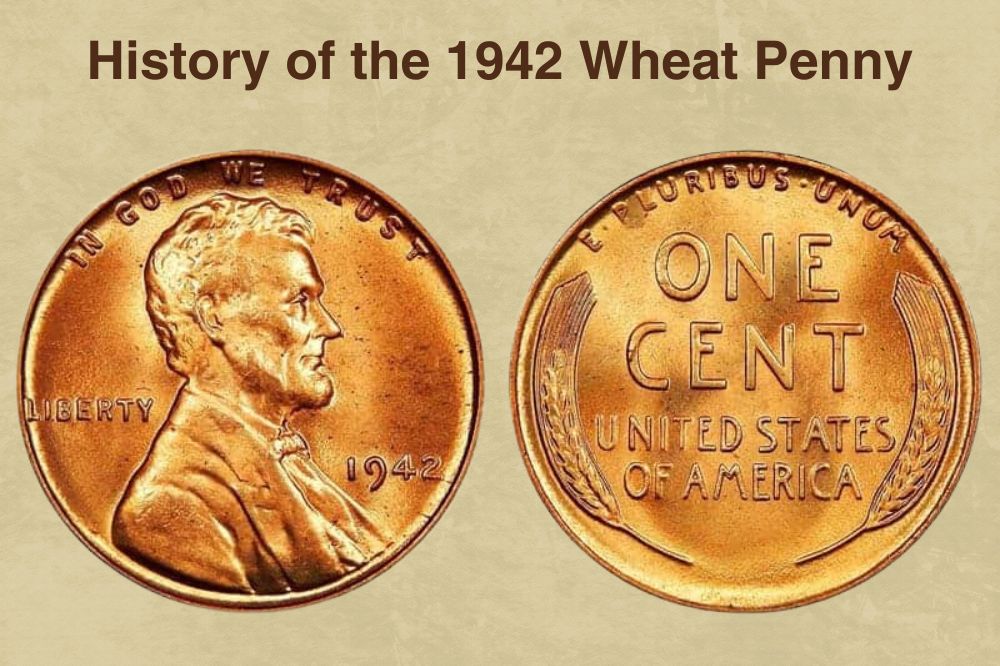
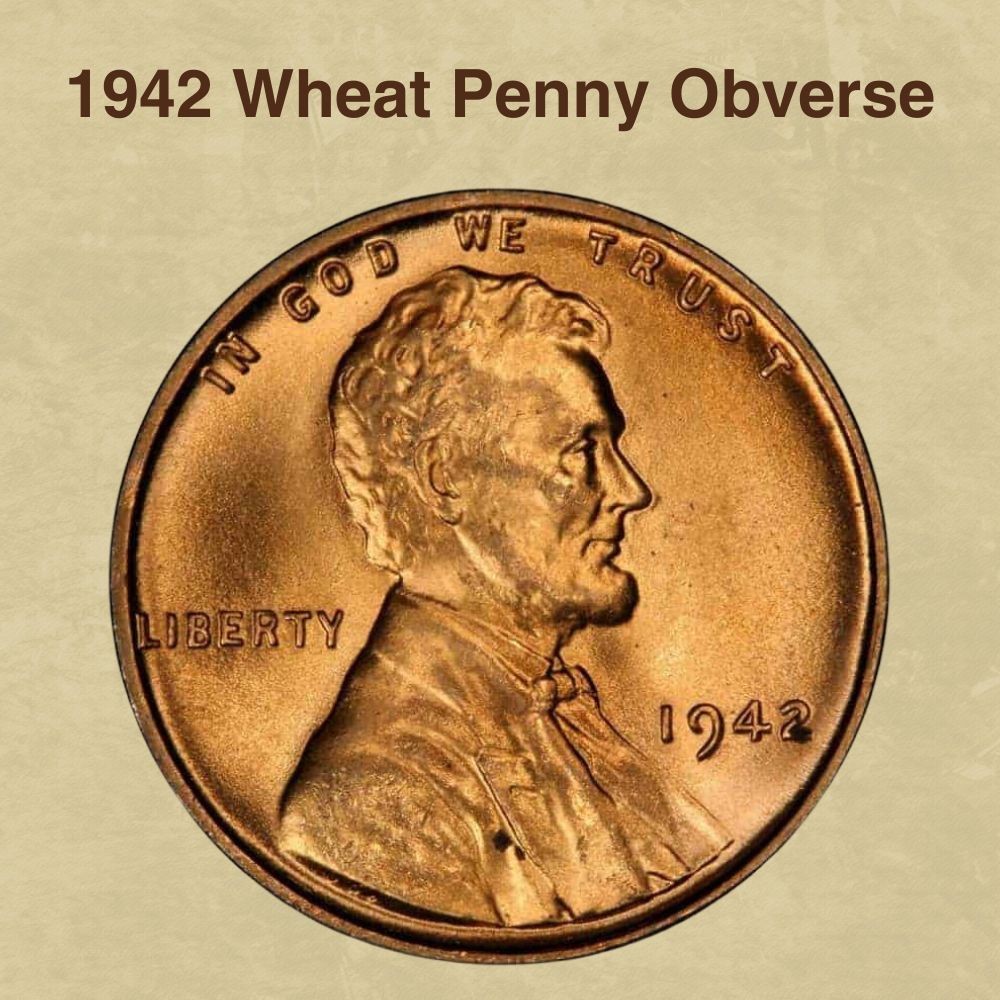
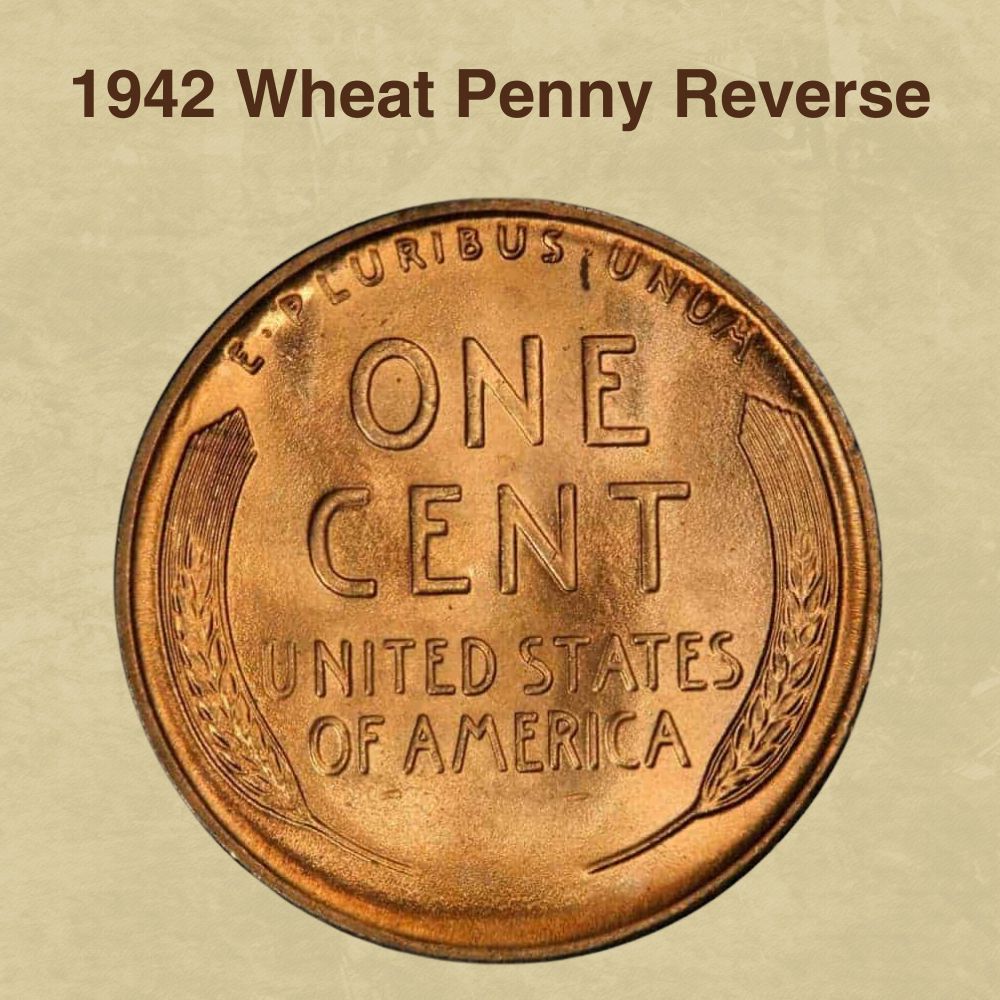




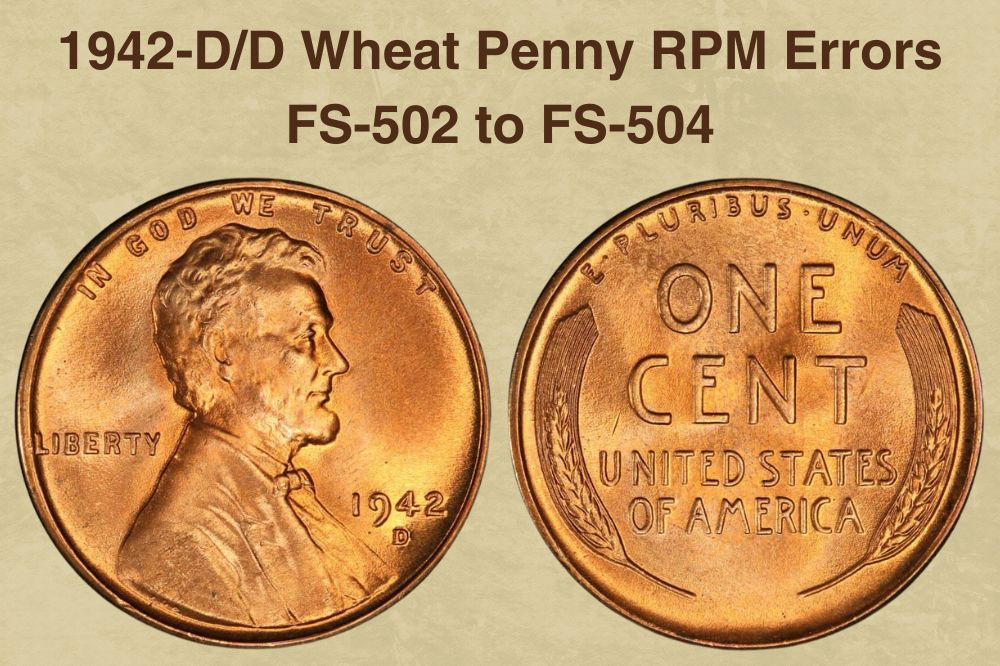
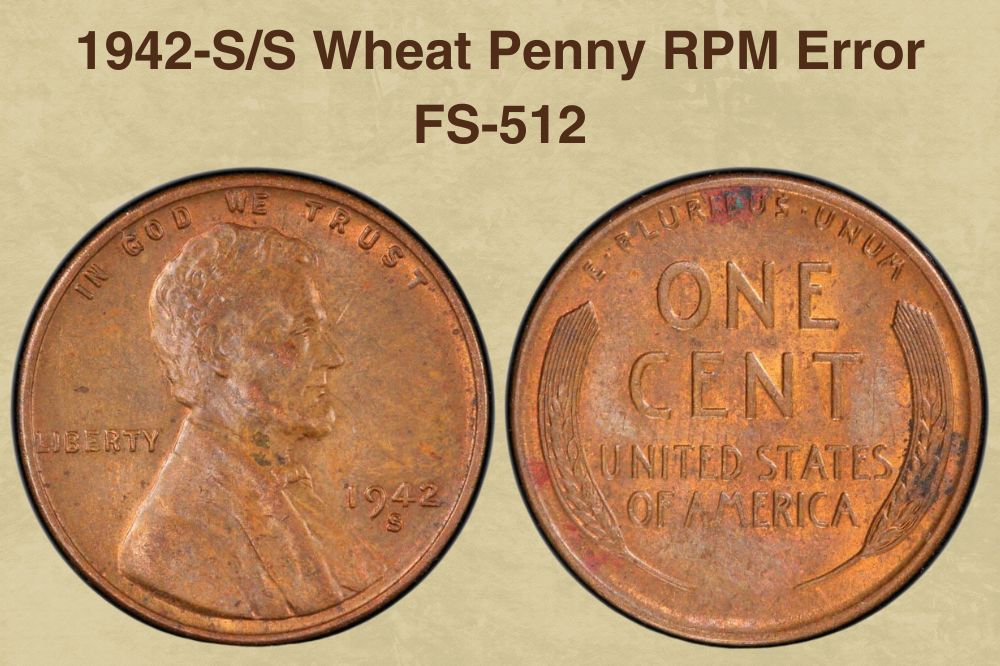






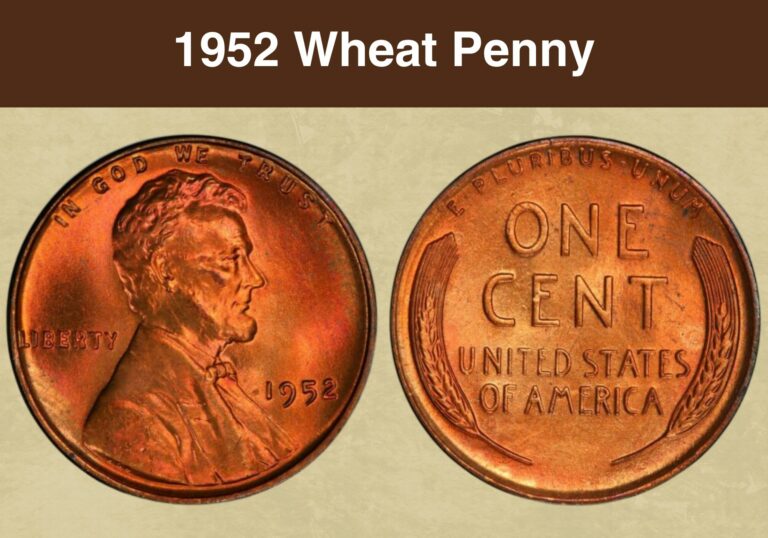


I have a 1942 looks gold color and weighs 2.85 what is the value and you can see imprints of another coin on it any Ideas of what I got and its worth ?
I have a 1942 S Lincoln Penny that weighs 2.7 Grams , normal weight is 3.11 +-.13 . Not magnetic and shows no evidence of plating, Brass, Zinc, Silver or Mercury. Is 18.96 mm. in Dia. The “T” in Liberty looks skewed.
Not extremely worn, can see lines in Wheat.
Any thoughts would be appreciated.. K Folsom
I have a 1942 silver wheat penny stamped on the wrong planted obviously but it is non-magnetic in excellent condition what could it be worth